Related Research Articles
The Leek and Manifold Valley Light Railway (L&MVLR) was a narrow gauge railway in Staffordshire, England that operated between 1904 and 1934. The line mainly carried milk from dairies in the region, acting as a feeder to the 4 ft 8+1⁄2 instandard gauge system. It also provided passenger services to the small villages and beauty spots along its route. The line was built to a 2 ft 6 in narrow gauge and to the light rail standards provided by the Light Railways Act 1896 to reduce construction costs.

The North Staffordshire Railway (NSR) was a British railway company formed in 1845 to promote a number of lines in the Staffordshire Potteries and surrounding areas in Staffordshire, Cheshire, Derbyshire and Shropshire.

The Dean Forest Railway is a 4+1⁄4-mile (6.8 km) long heritage railway that runs between Lydney and Parkend in the Forest of Dean, Gloucestershire.

Kidsgrove railway station serves the town of Kidsgrove in Staffordshire, England. The station is 7.5 miles (12.07 km) north of Stoke-on-Trent. The station is served by trains on the Crewe to Derby Line which is also a community rail line known as the North Staffordshire line. The station is owned by Network Rail and managed by East Midlands Railway.
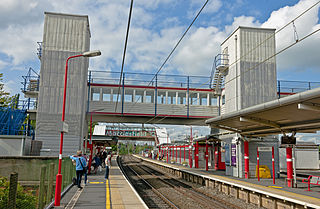
Macclesfield railway station is a main line station serving the Cheshire town of Macclesfield. It lies on the Stafford to Manchester branch of the West Coast Main Line in the United Kingdom.

Congleton railway station is a mainline station serving the Cheshire town of Congleton. It lies on the Stafford-Manchester branch of the West Coast Main Line in the United Kingdom.

Stoke-on-Trent railway station is a mainline railway station serving the city of Stoke-on-Trent, on the Stafford to Manchester branch of the West Coast Main Line. It also provides an interchange between local services running through Cheshire, Staffordshire and Derbyshire.

Longport railway station serves the areas of Longport, Middleport, Tunstall and Burslem, all districts in the northern part of Stoke-on-Trent, England. The station is served by trains on the Crewe to Derby Line, which is also a community rail line known as the North Staffordshire line. The station also has two trains a day on the Stoke-on-Trent to Manchester Piccadilly line. The station is owned by Network Rail and managed by East Midlands Railway.
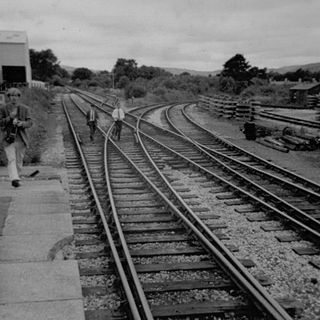
The Teign Valley line was a single-track railway line that ran from Heathfield, Devon, to Exeter via the Teign Valley. It joined the South Devon main line at Exeter City Basin Junction.
There are 22 disused railway stations in the 75 miles (121 km) between Bristol Temple Meads and Exeter St Davids, 12 of which have structures that can still be seen from passing trains. Most were closed in the 1960s but four of them, especially around Weston-super-Mare, were replaced by stations on new sites. 13 stations remain open on the line today, but there have been proposals to reopen stations at Cullompton and Wellington.
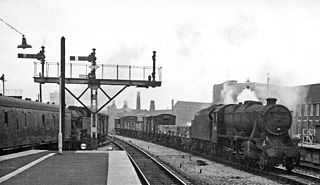
The Potteries Loop Line was a railway line that connected Stoke-on-Trent to Mow Cop and Scholar Green via Hanley, Burslem, Tunstall and Kidsgrove. It ran between Staffordshire and Cheshire in England. It served three of the six towns of Stoke on Trent. It was opened in many short sections due to the cost of railway construction during the 1870s. The line throughout was sanctioned but the North Staffordshire Railway felt that the line would be unimportant enough to abandon part way through its construction. This upset residents of the towns through which the line was planned to pass and they eventually petitioned Parliament to force the completion of the route.

The Severn and Wye Railway began as an early tramroad network established in the Forest of Dean to facilitate the carriage of minerals to watercourses for onward conveyance. It was based on Lydney, where a small harbour was constructed, and opened its line to Parkend in 1810. It was progressively extended northwards, and a second line, the Mineral Loop was opened to connect newly opened mineral workings.
The Cheadle branch line was a railway line of just under 4 miles (6.4 km) in length that served the town of Cheadle, Staffordshire. It was in operation as a passenger line from 1892 to 1963, and closed altogether in 1986. It took 46 years from conception to completion and was notable in that part of the line had to be practically rebuilt partway through its existence.
The Truro and Newquay Railway was a Great Western Railway line in Cornwall, United Kingdom designed to keep the rival London and South Western Railway (LSWR) out of the west of the county. The line was completed in 1905 and closed in 1963.

The Selby–Goole line was a standard gauge branch line connecting Selby and Goole, built in 1910 by the North Eastern Railway. The line closed in the 1960s as part of the Beeching cuts.
The Holywell branch line was a railway branch line in North Wales that connected Holywell with the North Wales Coast Line at Holywell Junction. Holywell had quite a large amount of mineral resources and the branch line was built originally as a mineral railway. When the local industry declined, the line fell into disuse, but it was reopened as a tourist passenger line in 1912. Road competition made the railway non-viable and this then caused the line to be closed in 1954.
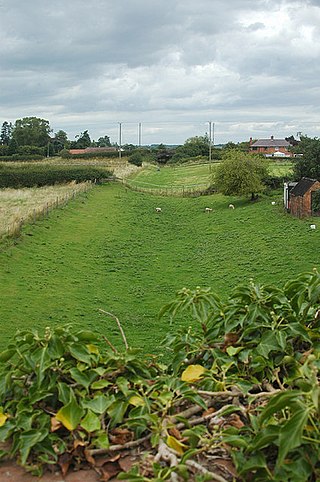
The Wellington and Drayton Railway was a standard gauge line in Central England which carried through freight and local passenger traffic until closure in the 1960s. It was part of the Great Western Railway's double track Wellington-Crewe line, linking the Midlands to the north and northwest.

Ipstones railway station was a railway station that served the village of Ipstones, Staffordshire. It was opened by the North Staffordshire Railway (NSR) in 1905 and closed to passenger use in 1935, but remained open to freight traffic until 1964.
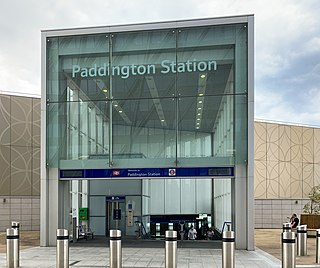
Paddington is a London Underground station served by the Circle and Hammersmith & City lines. It is located adjacent to the north side of Paddington mainline station and has entrances from within the mainline station and from Paddington Basin. The station is between Royal Oak and Edgware Road and is in London Fare Zone 1.
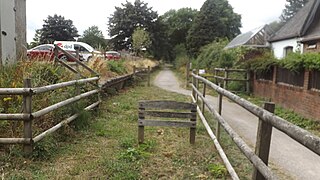
The Biddulph Valley line was a double tracked line that ran from Stoke-on-Trent to Brunswick Wharf in Congleton. The line was named after the town of the same name as it ran via the Staffordshire Moorlands and covered areas of East Staffordshire and Cheshire.
References
- 1 2 Allan. C Baker. An Illustrated History of Stoke and North Staffordshire's Railways. Irwell Press. p. 37. ISBN 1-903266-11-4.
- 1 2 Jeuda, Basil (20 April 2014). The North Staffordshire Railway In the LMS Days Volume 3. Lydney: Lightmore Press. p. 23. ISBN 9781899889839.